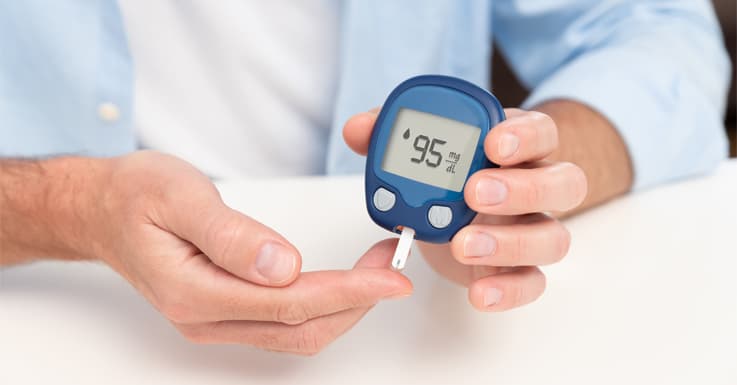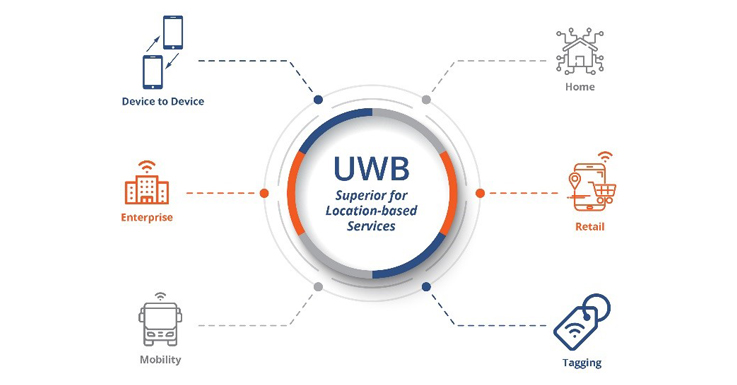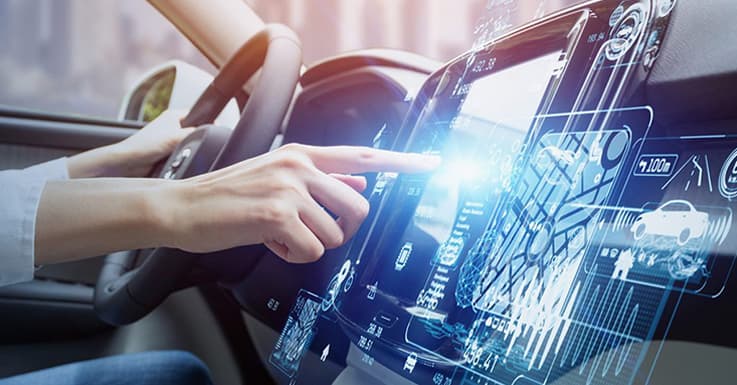GNSS and the Importance of TCXOs
Temperature-compensated crystal oscillators (TCXOs) play an important role in Global Navigation Satellite Systems (GNSS). These systems provide global positioning, navigation, and time synchronization services to all operational satellite navigation systems, including multiple constellations of satellites orbiting the Earth.
Powering the Future of Autonomous Driving with LiDAR
In the ever-evolving world of autonomous vehicles, LiDAR (Light Detection and Ranging), a sensor technology that uses laser pulses to create a 3D image of the environment around it, serves as the critical ‘eyes’ of self-driving systems. These systems rely on high-precision quartz crystals and oscillators to provide stable clock signals that are critical for ensuring measurement accuracy and data process speed.
Embracing IoT for the Future of Industrial Automation
Smart industrial applications have embraced the Internet of Things (IoT), including artificial intelligence (AI) , machine learning and data analytics. These advanced technologies improve all aspects of industrial automation, in areas like manufacturing, purchasing, logistics, real-time monitoring, predictive maintenance, improved efficiency, data-driven decision making, distribution and customer relationship management.
1.2 V TCXOs: The Future of Frequency Control for Low Power, Precise Electronics
In low-power electronic devices, where energy efficiency and high performance are critical, the 1.2 V Temperature Compensated Crystal Oscillator (TCXO) has become the oscillator of choice.
Illuminating the Future: Smart Vehicle Lighting Solutions
With the rapid evolution of technology, smart vehicle lighting has far surpassed simple illumination. These adaptive headlights use sensors, cameras and other technology to automatically adjust brightness, width and direction of the light based on vehicle speed, steering angle and surrounding environment.
Crystal Frequency Components: Powering the Future for WiFi Networks
Wireless technology has been around for decades. From its inception in 1997 when the IEEE 802.11 standard was ratified, to today's cutting-edge WiFi 6 and 7, this technology has consistently pushed the boundaries of what's possible in enhancing communications. Crystal frequency components ensure accurate and stable data transmission for WiFi networks.
Consumer Electronics
The consumer electronics industry is growing rapidly as technology continues to advance, with 5G becoming more widespread and 6G on the horizon. Through this advancement, data transfer rates are getting faster, with less lag and more stability. This is great news for the consumer.
Child Presence Detection
Riding in a car is a daily routine that many of us have the luxury of doing. For some of the youngest passengers, riding in a car can be peaceful and comforting, lulling them to sleep. If not careful and vigilant, these little ones could be left in a car accidentally. Especially if their safety seat is rear facing.
Ensuring Accuracy and Reliability in Medical Electronics
The global medical electronics industry is experiencing rapid growth, with a compound annual growth rate (CAGR) of 6.7%. With this growth there is a greater demand for building more intelligence into medical electronics products in a variety of applications, including diagnostic, therapeutic and rehabilitation devices as well as creating smart healthcare solutions for electronic medical records.
New Energy Vehicles
According to the U.S. Department of Energy, all forms of electric vehicles (EVs) help improve fuel efficiency, lower fuel costs and reduce emissions. New energy vehicles, also known as alternative fuel vehicles, use non-fossil fuels as a source of power. Helping provide a safer source of energy for the electrified part of the transportation sector through the use of more energy-efficient, multi-fuel source electric vehicles.
Smart Home
The very first glimpse of smart home technology was in 1975 with the invention of X10, a home automation platform that sent digital information through a radio frequency into a home's electrical wiring. This communication protocol was first used with a home's air conditioner wiring. It enabled the platform to communicate between devices and control modules installed within the home.
Ultra-Wideband Technology
Developed during World War II for secure communications and radar systems, ultra-wideband (UWB) is now being applied far beyond its military origins. This short-range wireless technology has gained notoriety in a broad range of commercial applications thanks to its precise positioning and location-tracking capabilities, combined with high-speed data transmission and minimal power consumption.
5G and Networking
Wireless networks such as 5G and industrial automation have completely changed the way people communicate, connecting people all around the world with just the press of a button. This new era of digital transformation is marked by high speed, low latency, and multiple connections. As networks require an increase in data transmission speed, as high as 800 Gb/s, precise frequency stability is needed to maintain performance.
Advanced Driver Assisted Systems (ADAS)
Advanced Driver Assisted Systems (ADAS) includes technologies that help drivers with the safe operation of a vehicle, while providing information like vehicle status and changes in the driving environment outside the car. In some cases, it can assist drivers in controlling their vehicle by giving warnings and prompts that enable them to avoid dangers on the road, including traffic accidents.
Artificial Intelligence
Artificial intelligence (AI) dates back as far as the 1940s, when a programmable digital computer, that was based on mathematical reasoning, was invented. This computer, and the ideas behind it, inspired several scientists to begin discussing the possibility of building an electronic brain.
Enhancing the Intelligent Cockpit Experience with Aker's XTAL Solutions
As the automotive industry evolves from mechanical to electronic systems, intelligent cockpits, with interactive interfaces that integrate software, hardware and systems to improve the user experience in an automobile, are being developed. These smart cockpits, featuring multiple screens, smart mobile devices and in-vehicle electronics, have emerged as the next frontier, transforming vehicles into advanced, connected living spaces. This innovation is driven by technologies like 5G, AI, big data and advanced semiconductor processes.


















